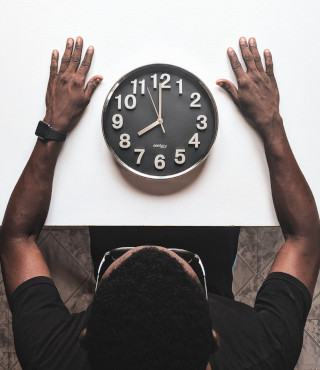Why You Should Write Down What You Spend


We’re fortunate to earn money when you click on links to products or services we already know and love. This helps support the blog and allows us to continue to release free content. Read our full disclosure here.
Look, maybe you’re already doing pretty well.
- You don’t spend a lot.
- You check your spending every once and a while.
- You even manage to save a bit every month.
But what if you could slash your spending in half?
There is a single tried-and-true trick that can help you spend less, save more, and completely re-align your spending with your values.
Write down what you spend.
Wait, wait – I see your eyes glossing over already. Stay with me.
The science is with us on this one – it’s called observation bias. Simply recording something can affect the results – whether it’s stepping on the scale or logging an expense.
Of course, body weight can be a tricky topic. The researchers readily warn that anyone with an existing emotional struggle with their body image should think twice about reopening old wounds.
But the connection is clear – what gets measured gets managed.
How to do it. ✍️
Don’t make this complicated.
- Get a notepad and pen. Or start a free Vermillion account.
- Spend money.
- Write it down.
- Include the item name and the amount you spent. Bonus points if you include when and where you spent the money.
- E.g. May 12, $54.75 spent on Groceries at WinCo
That’s it! You don’t even need to revisit it.
The simple act of knowing you'll be recording the transaction will trigger you to reflect on it.
But if you must total it up at the end of the month and gawk at how much you spent on face masks – well, we won’t stop you. 💅
Forced situational awareness. Turn off the auto-pilot. ✈️
Some of us go into a trance the minute we walk in the grocery store.
“Grocery list? I don’t need a list! I just walk down the aisles and look at everything – that way I know what I need when I see it.”
-You, wasting $5,546,435/year on impulse purchases
The average American household spends $2,641 per person every year on food, 60% of which is eaten at home. Personally, I shop once a week and buy between 15-20 items.
You may not realize it, but the grocery store is ripe for decision fatigue. Making 15 decisions in a row isn’t easy – and it can leave you mentally drained.
Store owners are hoping you lose control.
The sooner you do, the sooner you start throwing caution to the wind and random junk in your cart.
- Fed up by the checkout register → Throw a bag of M&M's in the basket.
- Give up halfway through the chip aisle → Wasted a whopping $50 on snacks.
- Going to the store hungry? Do not pass GO. Do not collect $200. You spent it on artisanal ice cream and organic mouthwash.
Yikes. Guess that coupon didn’t help very much…
We all start with great intentions. But our intentions are easily undone by a lack of preparation and awareness.
- Coupon for 25% off → Offset by one extra snack.
- No-Fee ATM → Killed 10x over by a single overdraft charge.
It’s enough to make even the toughest among us sob into our coffers.
But those attempts you made at saving – the coupon! The ATM! What do they have in common?
They’re intentional.
Contrary to what popular apps may want you to believe, we rarely save that much money on autopilot. Saving happens when we take action. And action only happens through awareness.
It’s not uncommon to see discretionary spending fall by 50% just by tracking it.
Don’t believe me? Try it.
See before you spend. 🔎
One huge benefit to tracking your spending in a zero-sum budget is being reminded of your budget balance every time you log an expense.
This sounds like more work, but trust me. It will save you thousands.
- Level 1: Spending blindly, with little knowledge of how much money you have.
- Level 2: Checking your account balance before purchasing.
- Level 9000: Checking your budget category balance before purchasing.
A budget balance is the difference between:
- Spending $50 during the first two weeks of the month and respectably declining drinks and outings after you’ve reached your spending limit.
- Blissfully blowing $200 on drinks, dinners, snacks, concert tickets, extra merch, and retail therapy.
And if you do overspend, your budget balance will tell you – and it won’t mince words.
Your budget won’t lie unless you do.
Re-focus your intentions. 💌
We all know what we should be doing with our money – more or less. We may not know which stock to buy, but we know we should be investing. We may not have every date night planned, but we know we’d like to spend more on quality time with our partner.
Every dollar is spoken for: School, retirement, vacation, etc.
We just get distracted.
It’s hard to consider the impact of every decision, so we tend to gloss over the details and do our best.
The simple act of knowing you’ll be recording the transaction will trigger you to reflect on it.
-Me, 3 minutes ago
Writing down each expense can serve as a small and consistent reminder to focus on what’s important. Every time you flip open your budget to record an expense, you’ll see that balance.
And maybe you’ll remember what it’s all for.
Related Posts

Why We Don't Save #6: "I'm just bad with money'."

Why We Don't Save #5: "I don't have time to budget."




